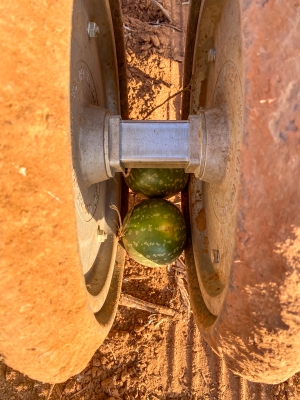
Late-season rain has resulted in some harvest headaches for Western Australian grain growers, including the emergence of weeds.
However, recently published Grains Research and Development Corporation (GRDC) resources are available to help growers to correctly identify which weeds are present, to help guide their management decisions.
The and include clear descriptions and images of weed species, through a range of growth stages, and can be used by grain growers to identify emerging weeds.
Andrew Storrie, of AGRONOMO, who authored the summer weeds manual, said accurate identification of weeds was critical to ensure that the correct management options were employed to achieve effective control.
“Misidentification can lead to ineffective and costly control practices. If you cannot identify a weed using the GRDC weed manuals, I encourage growers not to guess but to instead ask their agronomist to assist with identification,” he said.
Mr Storrie says it is important to ‘speak the same language’ when referring to weed species, as the use of common names could sometimes lead to incorrect identification and management.
“For example, summer weed surveys I have conducted on behalf of GRDC have highlighted that in some areas of WA’s grainbelt, Citrullus lanatus (Afghan melon) and Cucumis myriocarpus (prickly paddy melon) are often are confused with each other.
“This has implications as prickly paddy melonis more difficult to control than Afghan melon.”
Mr Storrie encouraged growers who could not control weeds during the harvest period to take steps to manage them before going on summer holidays.
“Every grower understands that large weeds are harder to control and that, in summer, weeds grow faster and can set seed in weeks,” he said.
“If spraying weeds in paddocks with crops – which might happen with later-harvested paddocks – growers need to adhere to withholding periods for herbicides, with more information available in the .”
Mr Storrie said that in some areas, melon species had germinated within a few days of the recent rainfall, and he expected fleabane species and common sowthistle (Sonchus oleraceus) would also emerge given the timing of the rain.
“I also expect caltrop (Tribulus terrestris L.) to germinate – this weed is a significant issue for many growers, particularly due to the short period of time between it germinating and setting viable seed.








